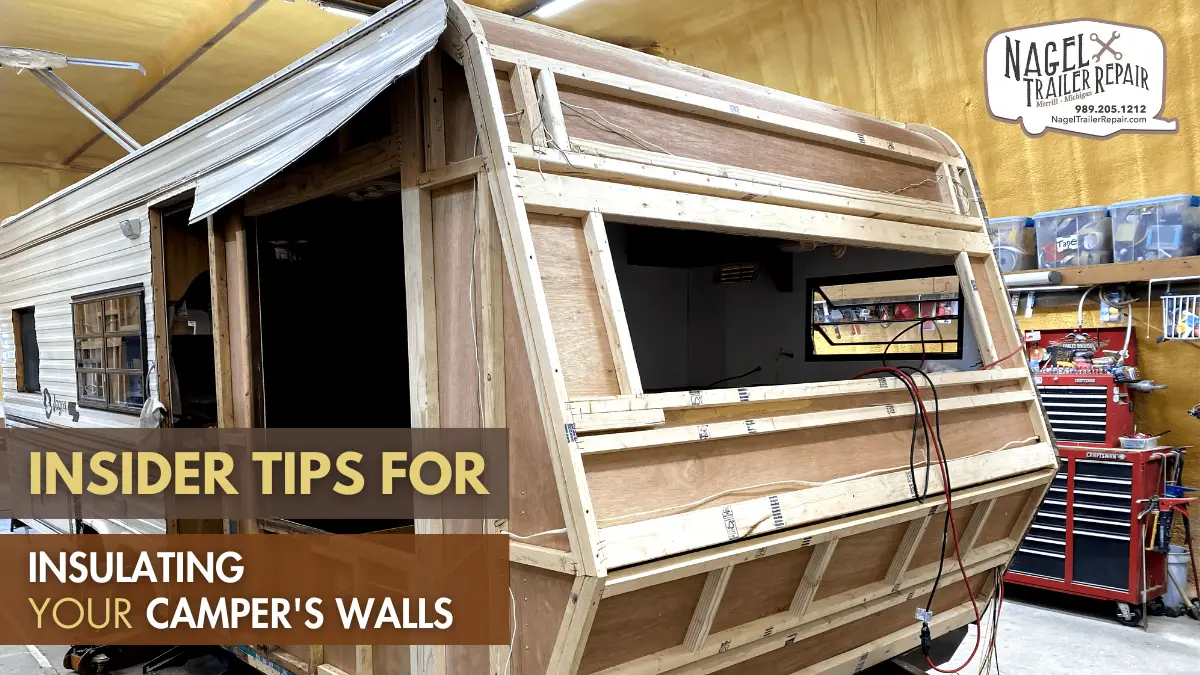As outdoor enthusiasts and road trip aficionados, there’s nothing quite like the freedom of hitting the open road in your camper. However, as temperatures fluctuate and weather conditions change, ensuring your camper provides a comfortable living space becomes crucial. One of the key aspects to focus on is proper insulation for your camper’s walls. In this blog post, we’ll explore some insider tips to help you effectively insulate your camper and create a cozy and energy-efficient haven on wheels.
1. Understand Your Camper’s Unique Needs
Before diving into the insulation process, it’s essential to understand the specific needs of your camper. Factors such as the type of camper, its size, and the weather conditions you’re likely to encounter will influence the insulation choices you make. For instance, a camper used primarily in colder climates may require different insulation materials compared to one used in warmer regions.
2. Choose the Right Insulation Material
Selecting the right insulation material is a critical decision. Fiberglass, foam board, and spray foam are popular choices for camper insulation. Fiberglass is known for its affordability and effectiveness, while foam board provides excellent thermal resistance. Spray foam, on the other hand, offers versatility and can fill even the smallest gaps, providing superior insulation. Consider the pros and cons of each material and choose the one that aligns with your camper’s needs.
3. Prioritize Proper Installation Techniques
Regardless of the insulation material chosen, the effectiveness of the insulation largely depends on proper installation. Take the time to seal all gaps and seams to prevent air leakage, as even the smallest openings can compromise the insulation’s efficiency. Thoroughly cover all areas, paying close attention to corners and edges, and use appropriate adhesives to secure the insulation in place.
4. Reflective Insulation for Added Protection
Consider adding a layer of reflective insulation to enhance your camper’s insulation properties. Reflective insulation, often made with foil-backed materials, reflects heat and can be particularly useful in preventing temperature extremes inside your camper. Install it strategically, such as on the inner surface of the walls, to create a barrier against radiant heat.
5. Don’t Forget About Windows and Doors
Windows and doors are notorious for letting in drafts and compromising insulation efforts. Insulate these areas with weather stripping and thermal curtains. Reflective window films can also be applied to reduce heat transfer, helping maintain a comfortable temperature inside the camper.
6. Incorporate Thermal Mass Materials
Incorporating thermal mass materials into your camper’s interior can help regulate temperature fluctuations. Consider using materials like stone or ceramic tiles as part of your camper’s decor. These materials absorb heat during the day and release it at night, providing a more stable and comfortable environment.
7. Ventilation Is Key
While insulation is crucial for maintaining a comfortable temperature, adequate ventilation is equally important. Install vents or fans in your camper to ensure proper air circulation. This not only helps in regulating temperature but also prevents moisture buildup, which can lead to mold and mildew issues.
8. Regular Maintenance and Checks
After insulating your camper, it’s essential to conduct regular maintenance checks. Inspect the insulation for any signs of wear, tear, or damage. Address any issues promptly to ensure your camper remains well-insulated and ready for any adventure that comes its way.
Conclusion
In the world of camper adventures, ensuring your home on wheels is well-insulated is a game-changer, especially when traversing the diverse climates of Michigan. From the Upper Peninsula’s chilly nights to the warmer days along the Great Lakes, mastering the art of camper insulation becomes paramount. By understanding your camper’s specific needs, choosing the right materials, and implementing proper installation techniques, you not only create a comfortable haven but also contribute to energy efficiency on the road. Reflective insulation and thermal mass materials offer added protection, while vigilant attention to windows and doors seals the deal. For those embarking on camper journeys in Michigan, where weather conditions can be unpredictable, these insider tips are invaluable.
However, the journey doesn’t end with insulation; it’s a continuous adventure. Regular maintenance checks are the compass guiding you towards longevity and sustained comfort. As you explore the beauty of Michigan’s landscapes, consider the importance of ventilation in tandem with insulation—striking the perfect balance for an environment that’s not only cozy but also well-aerated.
For those moments when wear and tear appear on the horizon, especially if you find yourself in need of Camper Repair in Michigan, remember that a well-insulated camper is a resilient one. Whether it’s addressing insulation concerns or handling any repairs, a proactive approach ensures that your camper remains a reliable companion throughout your Michigan adventures. So, embrace the open roads, relish the changing landscapes, and rest easy knowing that your well-insulated camper is not just a vehicle but a haven tailored for every twist and turn Michigan has to offer.

